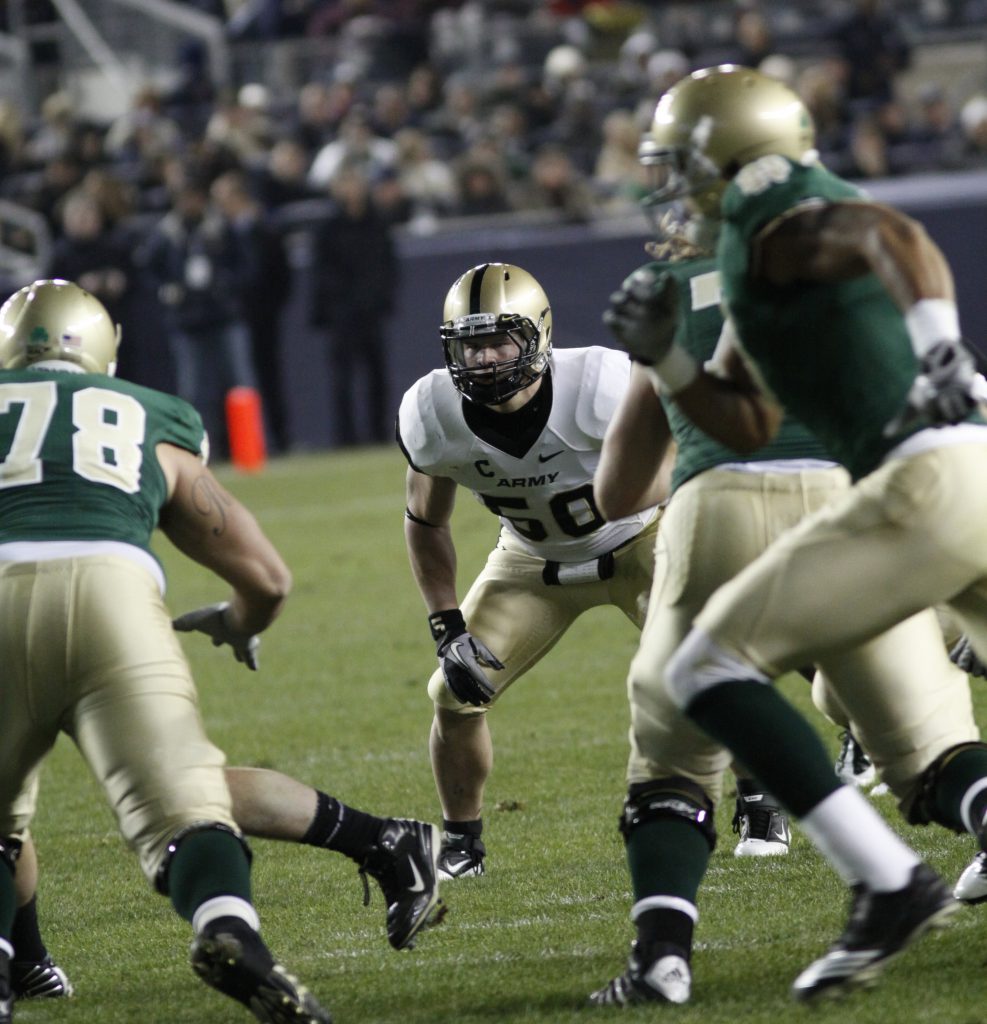In addition to team rosters, traditional college football fans might need a calendar, league muster lists and a working knowledge of NCAA probationary procedures since the 2012 season opening on August 30.
For starters, the 2012 season did not start on a Saturday, or even a Friday for that matter.
Opening day was on a Thursday night and it came complete with a full slate of games from coast to coast.
By the time Notre Dame and Navy initiated the Saturday, Sept. 1 slate at 9 a.m., (yep, that’s 9 in the morn, believe it not) some 44 teams had already played an opening game.
On Sunday, Sept. 2, there will be two more games, including the Bluegrass Bowl between Kentucky and Louisville. Finally, there will be a very technical Monday Labor Day-Night game involving Georgia Tech and Virginia Tech.
It’s a whole new ball game, you might say.
Then, fans of the Big XII Conference will need to keep in mind that there are no longer 12, but now 10 teams in the league.
The Big Ten Conference, meanwhile, will have 12 teams. However, one of those teams is Penn State, which has been so severely reprimanded by the NCAA that North Carolina State coach Tom O’Brien said the punishment equated to transforming Nittany Lions into “Division I-AA team.”
Big East Conference fans will need to take one long last look at the 2012 standings. A year from now, Pitt and Syracuse will be Atlantic Coast Conference members. West Virginia left during the summer for the Big XII.
No school did more unusual off-season maneuvering than Texas Christian, which won the Mountain West Conference championship in 2011, then left for the Big East but left the Big East for the Big XII without ever playing a game in the Big East.
“College football,” as Texas coach Mack Brown put it, “is a game of constant change.”
Amen.
And that’s not Paul Amen, the fellow who coached Wake Forest to an 11-26-3 record in the 1950s.
As the chase for the big bowls begins, here’s are three topics of 2012 interest:
•BCSEC! BCSEC!
Southeastern Conference teams have won six straight Bowl Championship Series (BCS) national title games, and there is no compelling reason to assume that domination will be halted in 2012.
For one thing, the long-avowed football-first league has added two more teams to its lineup. Missouri (East Division) and Texas A&M (West) join the mix and although neither is expected to have the clout of Alabama, Louisiana State, Auburn, Georgia or Florida, both are frequent bowl qualifiers.
Sports Illustrated magazine, in its preseason 2012 national ratings, pegged Alabama No. 1 and the favorite to win the BCS title for the third time in the last four years.
USA Today’s voting panel of 59 current head coaches went with another SEC West team, Louisiana State, at No. 1, followed by Alabama. Five more SEC teams were voted to top-25 preseason spots, Georgia (No. 6), South Carolina (No. 9), Arkansas (No. 10), Florida (No. 23) and Auburn (No. 25).
By comparison, the Big 10 Conference had one top-10 team (No. 8 Michigan) in the coaches poll. The Pacific-12 Conference had two (No. 3 Southern Cal and No. 5 Oregon).
“We are not resting on our laurels,” SEC commissioner Mike Slive says.
That much is obvious.
•SCANDAL CENTRAL
Maybe the most pressing question of all entering this new season is which school, coach, player, professor, booster club or president will become the next candidate for the mythical hall of shame?
The list of disgraced and/or slipshod coaches during just the last few seasons is staggering: Butch Davis (North Carolina), Jim Tressel (Ohio State), the late Joe Paterno (Penn State), Bobby Petrino (Arkansas) and Pete Carroll (Southern Cal) to name a few.
The phrase “out of control” has become the new “Whoa Nellie” of the sport.
So rampant is the misbehavior that it’s only a matter of time before some multi-millionaire head coach adds an assistant coach in charge of plausible deniability to his staff.
But as disgusting and revolting as the growing wave of irresponsibility is, the fact that fans still flock to the stadium is an accurate reflection of college football’s deep-seeded popularity in America.
Former Washington, D.C. mayor Marion Barry once said, “Outside of the killings, Washington has one of the lowest crime rates in the country.”
In an athletic sense, those words somewhat describe the philosophical approach loyal fans have taken to their school’s football team. Outside of the corner-cutting, outright cheating and cast of scoundrels, college football can still be a world of fun and excitement.
•NOTRE DAME’S SIGNFICANCE
The most famous name in college football last had a double-digit win season in 2006 (10-3) and hasn’t been a serious contender for a national championship since Lou Holtz’ 1993 team went 11-1.
Since Holtz’ final season (8-3 in 1996), the Fighting Irish have gone 117-78, hardly the sort of success that sends volley cheers on high in South Bend or in many places anywhere.
In fact, there’s a growing theory among many in the college community that Notre Dame will never be a full-blown football force again.
The school’s dogged determination to remain a football independent at a time when mega-conferences are running the show and cashing the biggest paychecks is a big part of the dynamic.
So, too, are academics.
In the most general sense, Notre Dame has maintained scholastic integrity and valid entrance requirements while many other schools long ago abandoned demands on football and basketball players to be legitimate students.
During his time as head coach at North Carolina, Dick Crum once said of Tar Heel football fans and administrators, “They want to be Harvard Monday through Friday and Oklahoma on Saturday.”
Notre Dame is trying to juggle those same desires. But until an era of sweeping reformation changes the college athletics mindset, Notre Dame’s rallying sons may have no choice except to hope for an occasional reminder of a time when the Irish had it all.
Greg Kelly’s third Notre Dame team should be able to improve at least a little on last season’s 8-5 finish, which included an 18-14 bowl loss to Florida State.
But even against what should be a fairly easy schedule, (Navy, Purdue, Miami, Stanford (without Andrew Luck), Pitt, Boston College and Wake Forest) the odds are heavily against the Irish returning to the national top 10 or so rankings this season.









